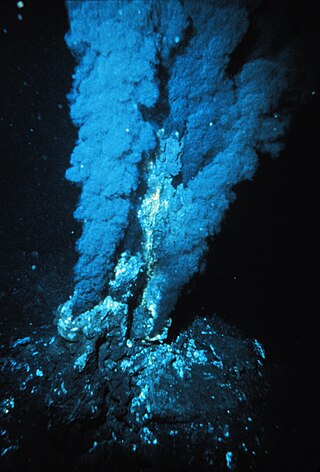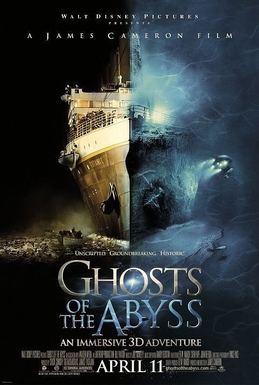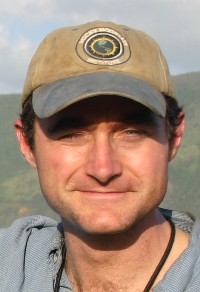
James Francis Cameron is a Canadian filmmaker. He is a major figure in the post-New Hollywood era, and one of the industry's most innovative filmmakers. He often uses novel technologies with a classical filmmaking style. He first gained recognition for writing and directing The Terminator (1984) and found further success with Aliens (1986), The Abyss (1989), Terminator 2: Judgment Day (1991), and the action comedy True Lies (1994). He wrote and directed Titanic (1997), Avatar (2009) and its sequels, with Titanic winning Academy Awards for Best Picture, Best Director, and Best Film Editing. He is a recipient of various other industry accolades, and three of his films have been selected for preservation in the National Film Registry by the Library of Congress.

The Abyss is a 1989 American science fiction film written and directed by James Cameron and starring Ed Harris, Mary Elizabeth Mastrantonio, and Michael Biehn. When an American submarine sinks in the Caribbean, a US search and recovery team works with an oil platform crew, racing against Soviet vessels to recover the boat. Deep in the ocean, they encounter something unexpected.

Hydrothermal vents are fissures on the seabed from which geothermally heated water discharges. They are commonly found near volcanically active places, areas where tectonic plates are moving apart at mid-ocean ridges, ocean basins, and hotspots. Hydrothermal deposits are rocks and mineral ore deposits formed by the action of hydrothermal vents.

An abyssal plain is an underwater plain on the deep ocean floor, usually found at depths between 3,000 and 6,000 metres. Lying generally between the foot of a continental rise and a mid-ocean ridge, abyssal plains cover more than 50% of the Earth's surface. They are among the flattest, smoothest, and least explored regions on Earth. Abyssal plains are key geologic elements of oceanic basins.

The seabed is the bottom of the ocean. All floors of the ocean are known as 'seabeds'.

The Lost City Hydrothermal Field, often referred to simply as Lost City, is an area of marine alkaline hydrothermal vents located on the Atlantis Massif at the intersection between the Mid-Atlantic Ridge and the Atlantis Transform Fault, in the Atlantic Ocean. It is a long-lived site of active and inactive ultramafic-hosted serpentinization, abiotically producing many simple molecules such as methane and hydrogen which are fundamental to microbial life. As such it has generated scientific interest as a prime location for investigating the origin of life on Earth and other planets similar to it.
The abyssal zone or abyssopelagic zone is a layer of the pelagic zone of the ocean. The word abyss comes from the Greek word ἄβυσσος (ábussos), meaning "bottomless". At depths of 4,000–6,000 m (13,000–20,000 ft), this zone remains in perpetual darkness. It covers 83% of the total area of the ocean and 60% of Earth's surface. The abyssal zone has temperatures around 2–3 °C (36–37 °F) through the large majority of its mass. The water pressure can reach up to 76 MPa.

Ghosts of the Abyss is a 2003 American documentary film produced by Walden Media. It was directed by James Cameron after his 1997 film Titanic. During August and September 2001, Cameron and a group of scientists staged an expedition to the wreck of the RMS Titanic and dived in Russian deep-submersibles to obtain more detailed images than anyone had before. Using two small, purpose-built remotely operated vehicles, the documentary offers glimpses into the Titanic wreck and, with CGI, superimposes the ship's original appearance on the deep-dive images.
The hadal zone, also known as the hadopelagic zone, is the deepest region of the ocean, lying within oceanic trenches. The hadal zone ranges from around 6 to 11 km below sea level, and exists in long, narrow, topographic V-shaped depressions.
Volcanoes of the Deep Sea is a 2003 documentary film in the IMAX format about undersea volcanoes directed by Stephen Low.

The deep sea is broadly defined as the ocean depth where light begins to fade, at an approximate depth of 200 m (660 ft) or the point of transition from continental shelves to continental slopes. Conditions within the deep sea are a combination of low temperatures, darkness, and high pressure. The deep sea is considered the least explored Earth biome as the extreme conditions make the environment difficult to access and explore.

Avatar is a 2009 epic science fiction film directed, written, co-produced, and co-edited by James Cameron and starring Sam Worthington, Zoe Saldana, Stephen Lang, Michelle Rodriguez, and Sigourney Weaver. It is the first installment in the Avatar film series. It is set in the mid-22nd century, when humans are colonizing Pandora, a lush habitable moon of a gas giant in the Alpha Centauri star system, in order to mine the valuable mineral unobtanium. The expansion of the mining colony threatens the continued existence of a local tribe of Na'vi, a humanoid species indigenous to Pandora. The title of the film refers to a genetically engineered Na'vi body operated from the brain of a remotely located human that is used to interact with the natives of Pandora.

A deep-sea community is any community of organisms associated by a shared habitat in the deep sea. Deep sea communities remain largely unexplored, due to the technological and logistical challenges and expense involved in visiting this remote biome. Because of the unique challenges, it was long believed that little life existed in this hostile environment. Since the 19th century however, research has demonstrated that significant biodiversity exists in the deep sea.

James Cameron is a Canadian director, screenwriter, and producer who has had an extensive career in film and television. Cameron's debut was the 1978 science fiction short Xenogenesis, which he directed, wrote and produced. In his early career, he did various technical jobs such as special visual effects producer, set dresser assistant, matte artist, and photographer. His feature directorial debut was the 1982 release Piranha II: The Spawning. The next film he directed was the science fiction action thriller The Terminator (1984) which starred Arnold Schwarzenegger as the titular cyborg assassin, and was Cameron's breakthrough feature. In 1986, he directed and wrote the science fiction action sequel Aliens starring Sigourney Weaver. He followed this by directing another science fiction film The Abyss (1989). In 1991, Cameron directed the sequel to The Terminator, Terminator 2: Judgment Day, and also executive produced the action crime film Point Break. Three years later he directed a third Schwarzenegger-starring action film True Lies (1994).

Hotspot Ecosystem Research and Man's Impact On European Seas (HERMIONE) is an international multidisciplinary project, started in April 2009, that studies deep-sea ecosystems. HERMIONE scientists study the distribution of hotspot ecosystems, how they function and how they interconnect, partially in the context of how these ecosystems are being affected by climate change and impacted by humans through overfishing, resource extraction, seabed installations and pollution. Major aims of the project are to understand how humans are affecting the deep-sea environment and to provide policy makers with accurate scientific information, enabling effective management strategies to protect deep sea ecosystems. The HERMIONE project is funded by the European Commission's Seventh Framework Programme, and is the successor to the HERMES project, which concluded in March 2009.

Hubble is a 2010 American documentary film about Space Shuttle missions to repair and upgrade the Hubble Space Telescope. It is narrated by the actor Leonardo DiCaprio.

A marine habitat is a habitat that supports marine life. Marine life depends in some way on the saltwater that is in the sea. A habitat is an ecological or environmental area inhabited by one or more living species. The marine environment supports many kinds of these habitats.

Kevin Hand is an astrobiologist and planetary scientist at JPL. He is also the founder of Cosmos Education and was its president until 2007. He was working at NASA Ames when he was inspired to form Cosmos Education in 1999 after getting a grant from the Earth and Space Foundation to tour African schools to talk about how education relates to space research.
Andrew Wight was an Australian screenwriter and producer best known for his 2011 film Sanctum. He produced over 45 films including television documentaries, live television specials and 3D IMAX films. His credits include Ghosts of the Abyss, Aliens of the Deep and Expedition: Bismarck. Wight was honoured with the Australian Geographic Society Spirit of Adventure Awards in 1989.

A Beautiful Planet is a 2016 American documentary film written, directed, and produced by Toni Myers and narrated by Jennifer Lawrence. It was originally released exclusively for IMAX theatres. Created in cooperation with NASA, the documentary uses footage recorded by astronauts aboard the International Space Station (ISS) over the course of fifteen months.














